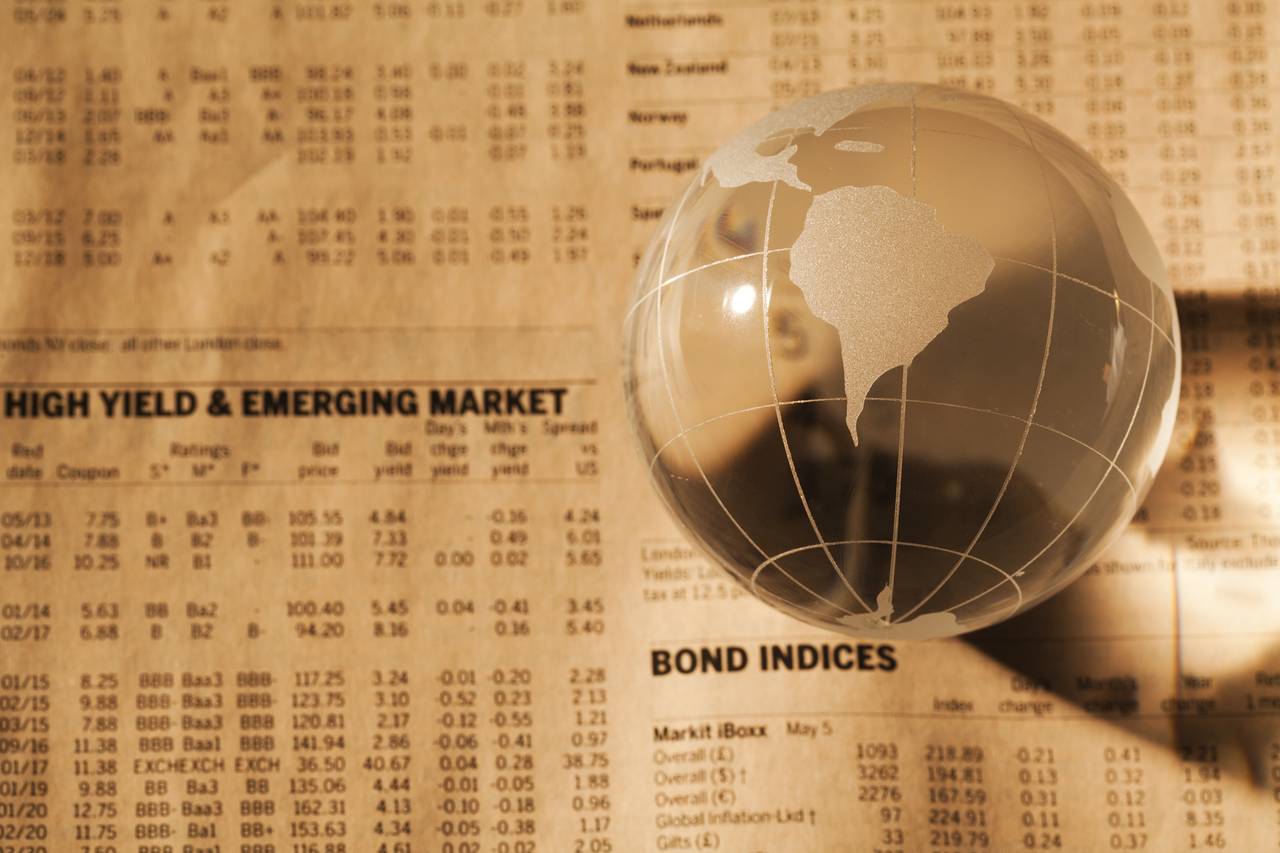By Mike Biggs, Investment Manager – GAM
If investments into EM local currency debt are funded out of CAD rather than USD, then the volatility of returns declines, and the size and frequency of drawdowns is reduced significantly.
Returns to EM local currency debt financed in CAD (EML CAD) are mean reverting. Strong returns in one period tended to be followed by weaker returns over the following months.
This has two implications. Firstly, while annual volatility is low, monthly volatility remains high. The monthly volatility can be reduced by using a basket of funding currencies rather than just the CAD.
Secondly, this mean reversion can be exploited in a systematic way to enhance returns.
The volatility of EM local currency debt stems mainly from the FX component. Shocks to EM
FX in aggregate tend to be driven by global macroeconomic developments, including changes in the USD. These shocks affect other DM currencies as well, with the result that EM and DM FX moves are closely correlated. This is particularly true for DM economies that also have commodity exposure, such as the CAD, AUD or NOK.
These DM currencies tend to have very low yields and, if they are used as funding currencies, they provide a cheap and efficient hedge to the FX risks inherent in local currency EM debt.
EM local currency debt funded in CAD
To illustrate this idea, we have used the Canadian dollar as our funding currency.
By investing in EM local currency debt and financing the investment in CAD, one is effectively putting on two trades: a) long EM FX versus the US dollar and b) long the US dollar versus the Canadian dollar. The USD risk is effectively removed and is replaced by CAD risk. If EM FX and CAD are closely correlated, however, the overall volatility of the trade is reduced.
As Chart 2 shows, if investments into EM local currency debt are funded out of CAD rather than USD, then the volatility of returns declines, and the size and frequency of drawdowns is reduced significantly. In addition, returns to EML CAD appear to exhibit mean reversion.
Mean reversion and volatility
Most USD credit asset classes exhibit momentum – returns in the one month are positively correlated with returns in the next. EML CAD, in contrast, is mean reverting – periods of above-average returns are followed by periods of below-average return.
Intuitively, this makes sense. Global macroeconomic developments should affect both EM currencies and the CAD, but the impact might not show up in prices at exactly the same time.
If a particular macroeconomic shock is priced into CAD in this month but only fully priced into EM FX next month, then EML CAD will tend to be mean reverting.
The standard practice when measuring volatility is to consider price changes over a short period (such as a month) and then annualise the results to get annual volatility. This makes the important assumption that excess returns in one period are unrelated to excess returns in the following period. Or, to put it differently, the series exhibit neither momentum nor mean reversion. This has important implications for how one thinks about volatility.
For two time periods a and b, the variance in returns over the whole period will be equal to:
Variance (a+b) = Variance (a) + Variance (b) + 2*Covariance (a,b)
If returns in one period are unrelated to returns in the next, then the covariance between a and b is zero.
In reality this is seldom true. Many of the USD credit asset classes exhibit momentum, which means the covariance is positive, and the annual volatility of the asset class will be higher than one might expect from the monthly moves. This is the case for most USD credit asset classes, including US high yield or EM hard currency bonds.
In contrast, EML CAD exhibits mean reversion,
the covariance in returns between periods is negative and annual volatility is lower than monthly annualised volatility.
But while this is a very attractive feature for investors with a longer time horizon, the monthly volatility can still prove to be a challenge. The risk is that the short-term noise forces investors out of a pro table longer-term position.
This problem can be solved relatively easily by using a basket of funding currencies rather than just the CAD. Table 1 shows the volatility of EM local currency government debt financed out of USD, CAD, and an equally weighted basket of AUD, CAD, EUR and NOK.
Funding the EM local currency debt investment out of CAD rather than USD reduces the volatility of annual returns from 11.8 to 6.6. However, the volatility of monthly returns falls only from 11.7 to 9.2. This risk, as we said, is that the short-term volatility prevents investors from staying in the trade long enough to bene t from the medium- term stability.
If the investment is funded out of an equally weighted basket of AUD, CAD, EUR and NOK,
in contrast, returns are largely unaffected, the volatility of annual returns falls only marginally further to 6.0 from 6.6, but the volatility of monthly returns declines to 6.9 from 9.2.
In our view this does little to enhance long-term returns, but it may well reduce short-term stress.
Mean reversion and systematic investing
The mean reversion exhibited by EML CAD can also be used to boost returns. Under mean reversion, periods of strong returns are followed by weaker returns and vice versa. If this is the case, then investments can be levered up after weak periods and exposure can be reduced after strong periods to enhance returns.
Chart 3 shows that periods of strong performance are indeed followed by periods of weaker performance and vice versa. For the entire period since 2003, EML in CAD has returned 1.54% per three-month period. However, if returns exceeded 5% in the previous three months, then average returns fell to 0.02%. If returns were below -2% over the previous three months, then returns increased to 2.76%.
One can exploit this relationship via a quantitative investment rule. As an example, one can invest
in EML CAD, but leverage this investment up by 50% whenever performance over the past three months is below -2%, and lever it down by 50% whenever investment over the past three months is above 5%.
Conclusions
Financing an EM local currency debt investment out of CAD rather than USD reduces the volatility of returns significantly without having too much of an impact on the level of returns.
However, EML in CAD also has some interesting characteristics that set it apart from other fixed income asset classes. Most importantly, the series exhibit mean reversion rather than momentum.
This has two implications. Firstly, the return series is more stable in the longer term than the monthly numbers would suggest. If this is a concern for investors, then a basket of funding currencies can reduce short-term volatility damaging longer term returns.
Secondly, mean reversion implies that periods of strong performance tend to be followed by periods of weak performance and vice versa. If the investment is levered up after periods of weakness and levered down after strength, short- term volatility, as well as overall returns, can be increased. Since 2003, this strategy would have raised returns by nearly 2% per annum.

Mike Biggs, Investment Manager – GAM








